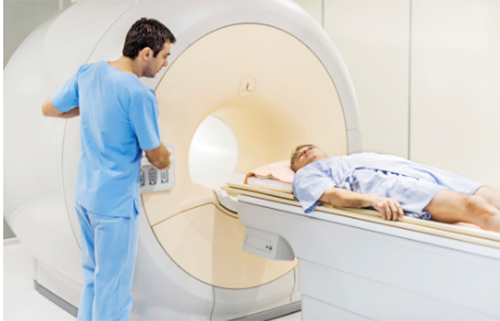If, when, and how men with negative biopsies for prostate cancer should continue to be monitored are questions facing patients and health care providers in view of concerns and criticisms about over detection, overtreatment, and under detection due to sampling errors in standard biopsies. An expert panel of urologists and radiologists from the American Urological Association (AUA) and the Society of Abdominal Radiology (SAR) has published a set of consensus statements in The Journal of Urology® indicating that MRI (magnetic resonance imaging) targeted biopsy, when properly incorporated into clinical practice, can address such issues.
The panel recommends the use of prostate MRI and MRI targeted biopsy for any patient in whom prostate cancer is suspected, despite a prior negative biopsy, and who is under evaluation for a possible repeat biopsy. “The panel recognized a role for prostate MRI and MRI targeted biopsy to increase the detection of clinically significant prostate cancer in the repeat biopsy setting. It also explored challenges facing the wider clinical implementation of MRI targeted biopsy at this time,” explained lead author Andrew Rosenkrantz, MD, associate professor in the Departments of Radiology and Urology at NYU Langone Medical Center, New York, NY.
Prostate MRI is used to identify patients with a prior negative biopsy who warrant repeat biopsy by identifying regions of interest to target and to direct biopsies to those suspicious areas under image guidance. A growing body of evidence-based literature demonstrates the value of MRI targeted biopsy in the repeat biopsy setting. However, because these techniques are relatively new, there is a lack of standardization of image quality and individual radiologist’s interpretation abilities. According to the panel, “As of this writing there is no formal mechanism for radiologists to become certified in prostate MRI interpretation, nor an established number of examinations that must be interpreted for radiologists to achieve sufficient experience.”

(Credit: Getty Images)
With sufficient expertise, prostate MRI and MRI assisted biopsies can certainly benefit patients but conversely, “if expertise is lacking, the proposed clinical usefulness of prostate MRI is unlikely to be achieved, and misleading information and harmful consequences are possible,” commented Dr. Rosenkrantz. The decision of whether to perform MRI must also take into account the results of any other biomarkers and the cost of the examination.
The panel’s consensus statements address cancer detection rates using MRI targeting, which patients can benefit from MRI methods, specific methods and other considerations for MRI targeted biopsies, when patients should undergo immediate repeat biopsies after MRI, and what followup should be done after a negative MRI directed biopsy result. Key recommendations include adherence to Prostate Imaging Reporting and Data System (PI-RADS) Version 2 and strict quality standards; the potential usefulness of MRI ultrasound fusion or in-gantry MRI targeting technologies even if visual targeting remains a reasonable approach in skilled hands; as well as the need for close clinical and laboratory surveillance when deferring repeat biopsy based on MRI findings.
The panel suggests that these consensus statements could potentially alter how prostate cancer is initially diagnosed in the U.S., allowing patients to undergo more reliable targeted biopsy, more accurate risk assessment, and improved treatment options. To that end, “The consensus statement was developed in a collaborative fashion by a panel of both urologists and radiologists, thus integrating the two groups’ experiences, expertise, and insights to generate as clinically relevant and practical a paradigm as possible,” noted Dr. Rosenkrantz.
The full consensus statement is available online and incorporates a detailed literature review on which the panel recommendations are based.




